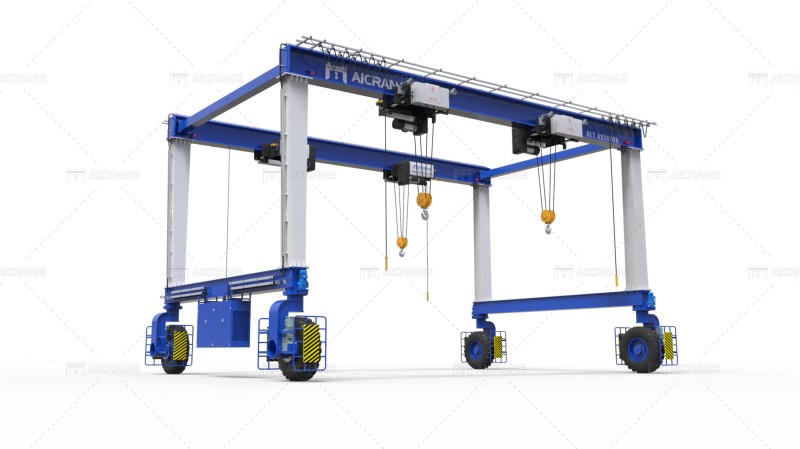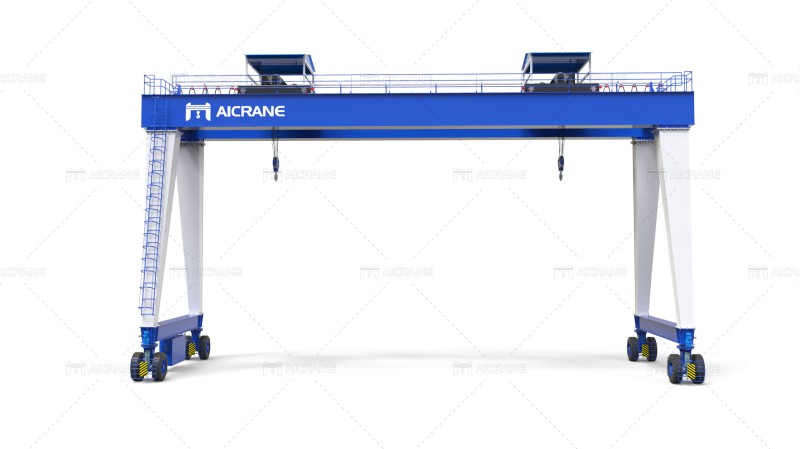Rubber Tyred Gantry (RTG) cranes are mobile gantry cranes that are used for handling and stacking containers in intermodal yards and container terminals. There are several types of RTG cranes available, including:
- Diesel-Powered RTG: This type of RTG crane is powered by a diesel engine, making it suitable for use in outdoor container terminals where there is no access to electrical power. These cranes are equipped with rubber tires that allow them to move quickly and easily around the container yard.
- Electric-Powered RTG: This type of RTG crane is powered by electricity and is suitable for use in container terminals with access to electrical power. These cranes are equipped with rubber tires that allow them to move quickly and easily around the container yard.
- Hybrid RTG: This type of RTG crane combines both diesel and electric power, making it a more environmentally friendly option. The diesel engine is used to power a generator that produces electricity to power the crane.

Applications of RTG cranes
- Container Handling: RTG cranes are primarily used for handling and stacking containers in container terminals and intermodal yards. They are capable of lifting and moving containers weighing up to 40 tons.
- Intermodal Operations: RTG cranes can be used in intermodal operations to transfer containers between trucks, rail cars, and ships.
- Industrial Applications: RTG cranes can also be used in industrial applications to handle heavy and bulky materials, such as steel pipes, lumber, and machinery.
- Military Applications: RTG cranes are used by military forces for material handling and logistic operations.
- Mining and Construction: RTG cranes are also used in mining and construction to move heavy materials and equipment.

Operating a rubber tyred gantry crane (RTG) requires specialized training and certification. However, here is a general overview of the steps involved in operating an RTG crane:
- Pre-Start Inspection: Before operating the RTG crane, the operator should perform a pre-start inspection to ensure that all components are in good working condition. This includes checking the tires, brakes, hydraulic systems, electrical systems, and safety features.
- Start-Up: After completing the pre-start inspection, the operator can start up the RTG crane. This involves starting the engine and hydraulic system, and ensuring that all control systems are working properly.
- Container Lifting: The RTG crane operator must use the controls to lift the container from the truck or trailer bed, and then move it to the desired location. The operator must follow safety protocols and guidelines while operating the crane, including ensuring that the load is balanced and not exceeding the crane’s rated capacity.
- Stacking: Once the container is lifted and moved to the desired location, the RTG crane operator can stack the container. The operator must ensure that the container is placed in the correct location and that it is secured properly.
- Shut-Down: Once the work is complete, the operator must shut down the RTG crane by following the proper procedure. This involves turning off the engine, hydraulic system, and other control systems, and ensuring that the crane is properly parked.
It is important to note that the specific operating procedures may vary depending on the type of RTG crane being used, and the specific operating environment. It is important to receive proper training and certification before operating an RTG crane.